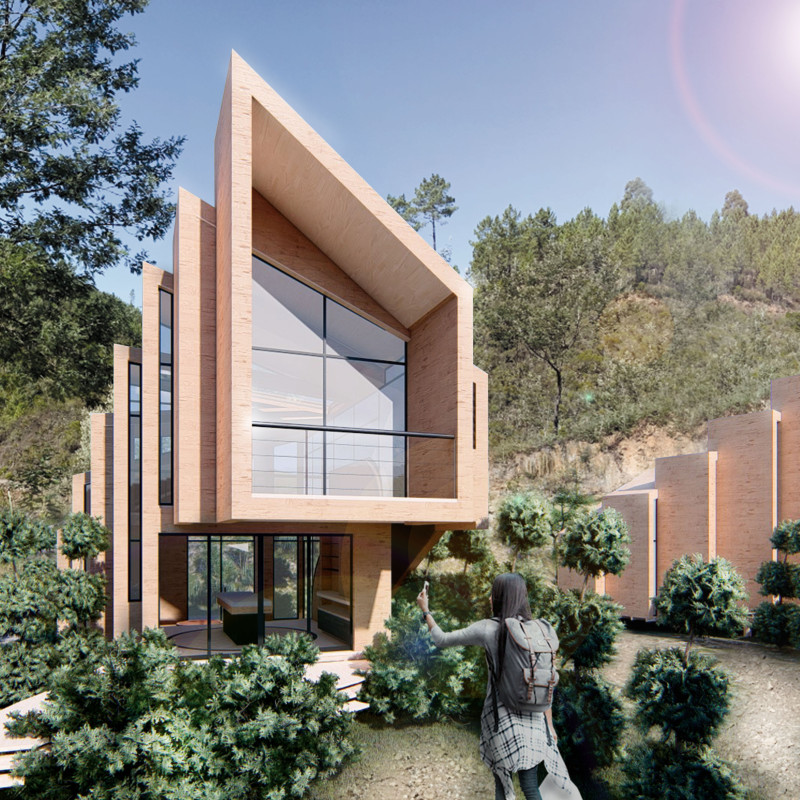5 key facts about this project
Cork Cabins is an eco-friendly retreat located in Portugal, designed to serve as a space for meditation and relaxation. The project emphasizes a close bond with the natural environment, creating spaces that foster mindfulness and a deeper connection to surroundings. As guests move through the cabins, they experience a gradual immersion into nature, highlighting the intention behind the design.
Materiality
The main material used in the cabins is cork, which is known for its excellent insulating properties and sustainability. Cork block construction enhances thermal performance while minimizing environmental impact. This focus on natural materials supports the goal of creating a strong relationship between the cabins and their landscape.
Design Layout
The layout features two levels that distinguish between treatment areas and meditation spaces. The ground floor contains treatment rooms, surrounded by trees that offer privacy and link the indoor experience to the outside world. The upper meditation area provides expansive views of the valley, promoting a sense of openness and tranquility. This thoughtful arrangement allows for varied experiences, catering to both relaxation and reflection.
Natural Light
Natural light plays a vital role in the design. Glazed openings and a brise soleil wall are placed to filter sunlight into the interiors, creating changing shadow patterns throughout the day. A small pond in the entrance area adds relaxing sound, enhancing the peaceful atmosphere. Together, these elements contribute to a calming environment that encourages guests to pause and reflect.
Sustainability Features
The design includes features like rainwater harvesting systems that enhance sustainability. Rainwater is captured through hidden gutters and stored for later use, such as irrigation or sanitary purposes. This practical approach helps ensure that the cabins work in harmony with their natural surroundings.
The approach to the cabins is framed with careful planting, using vegetation to create natural boundaries between structures. This landscaping detail not only enhances privacy but also emphasizes the importance of nature within the guest experience. The integration of natural elements supports a welcoming environment that encourages occupants to connect with both architecture and the landscape.





















































